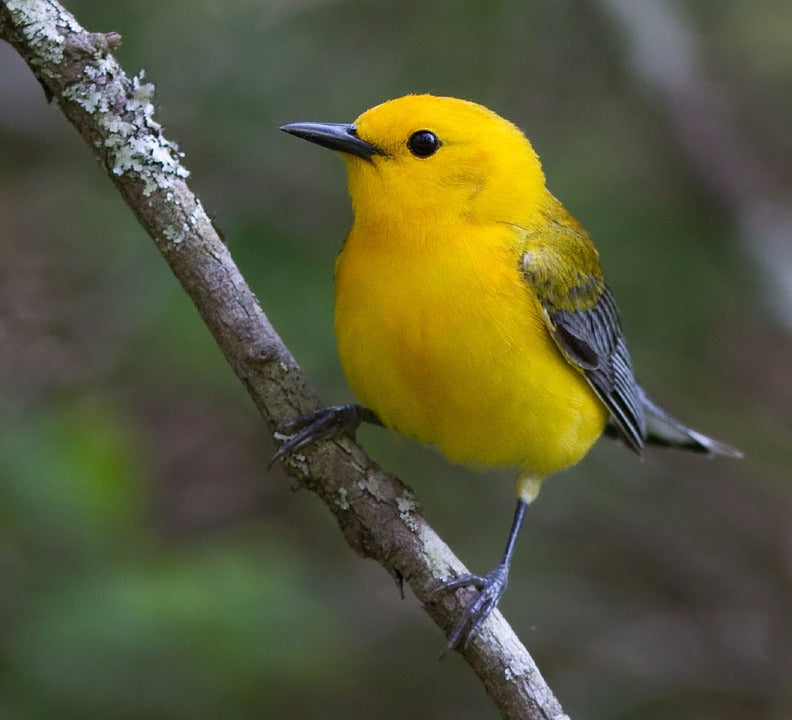Offer
Provide additional details about the offer you're running.
Provide additional details about the offer you're running.
Provide additional details about the offer you're running.

A striking, yet declining sight to behold, the prothonotary warbler is a beautiful yellow and orange coloured bird that unfortunately has become endangered. Much like many other warblers, this warbler is a small songbird that calls the eastern United States and some of southern Ontario home during the summer months. This warbler is one of two species of warbler that nests in cavities such as holes found in dead or decaying trees, usually close to swampland. The other cavity-dwelling species of warbler is Lucy’s warbler.
Before the Endangered Species Act came into effect in 2008, this small songbird was already assessed as an endangered species. Its population has declined continentally at an average rate of 1.1% from 1996 to 2007. In Canada, there were approximately 40+ pairs during the 1980’s, but estimates as recent as 2008 indicate there were fewer than a dozen pairs at that time.
As far as the province of Ontario goes, this bird is currently only known to nest along the north shore of Lake Erie with the majority making their summer homes in Rondeau Provincial Park. The main threats this warbler faces are habitat destruction, competition from other birds and natural factors such as climate change, storms, and varying water levels.
Wintering habitat in Central and South American locales is also considered to be a large reason for the decline of this species. Many ideal habitats like mangrove swamps in these countries are being destroyed, leaving less than ideal conditions and fierce competition for habitat.
In 2012 the Environment Canada drafted a Recovery Strategy to benefit the prothonotary warbler which detailed a five-year strategy that composed of the following objectives:
While this Recovery Strategy is still ongoing, we were unable to uncover any recent statistics regarding the success of the program. In taking a quick glance at eBird.org, we can still see that there are recorded sightings in 2015 in the Lake Erie area, which can only be an encouraging sign.
High Quality Blend